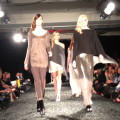
Dress to Express: How Men Use Fashion to Shape Their Identity
Fashion is often seen as a reflection of our identity and personal style. For men, this is no different; clothing and accessories have long played a crucial role in expressing cultural, professional, and personal tastes. The way men dress can speak volumes about their personality, status, and even aspirations. This article explores how sartorial choices help men shape and communicate their identities.
Pushing Boundaries with Casual Wear
Casual wear for men has evolved significantly over the decades, introducing more daring and expressive options. Among these trends are jorts for men, which may sound surprising but have made their way into mainstream fashion. Initially considered a fashion faux pas or relegated strictly to informal environments, denim shorts have been embraced widely, reflecting a shift towards more relaxed and personalized wardrobe choices.
This trend signifies more than just comfort; it’s a statement of individuality and rebellion against strictly formal or traditionally masculine attire. As men become more active participants in the fashion dialogue, they utilize pieces like jorts to showcase their style preferences and break away from stereotypes. This shift is part of a larger movement where men feel empowered to experiment and truly embody their unique sense of self through fashion.
The Professional Wardrobe
While casual wear allows for personal expression and comfort, professional attire acts as a tool for communication in workplaces. The classic suit and tie ensemble has long been symbolic of professionalism, authority, and respectability in the corporate world. However, modern workplace attire is slowly evolving, accommodating more styles and personal touches while retaining its polished look.
Men are increasingly incorporating elements like bespoke suits, designer spectacles, and standout watches to express individuality within professional norms. This evolution in professional attire reflects broader organizational changes where companies encourage authenticity as a means of fostering inclusive and positive workplace cultures. Through subtle yet significant modifications in their professional dress, men are reshaping what it means to look ‘business-ready’ and, by extension, defining their professional identities.
Cultural and Historical Influences
Fashion is deeply intertwined with culture, and for many men, clothing is a way to connect with their heritage and history. Traditional garments like the Scottish kilt, Japanese kimono, and Indian sherwani are worn proudly by men during significant occasions to honor their roots and tell a story of lineage. These outfits are not just costumes but are imbued with centuries of tradition and pride.
In multicultural societies, men often blend traditional clothing from their culture with contemporary fashion to create a hybrid style that is both respectful to their ancestors and relevant to modern times. This synthesis speaks to the complexities of identity in a globalized world where fashion becomes a bridge between the past and the present.
Expression Through Accessories
Accessories arguably offer the freest form of expression in men’s fashion. Items such as hats, shoes, belts, and watches are not only functional but serve as subtle cues about a person’s lifestyle and values. For instance, a pair of eco-friendly sneakers can suggest a commitment to sustainability, while a high-end chronograph may indicate a penchant for craftsmanship and luxury.
More than just supplementary to clothing, accessories give men the opportunity to assert their personalities and refine their aesthetic sensibility. Each chosen piece adds layers to the narrative they wish to convey about who they are and seeks to carve out a distinct identity in a world crowded with conforming styles.
The Future of Men’s Fashion
As society’s understanding of gender and roles continues to evolve, so too does men’s fashion. The future likely holds a more fluid and inclusive approach to menswear, where the traditional boundaries of ‘male clothing’ are expanded or reinterpreted. More men are finding freedom in treating fashion as a genuine form of self-expression rather than merely a function of societal expectations.
Younger generations are especially pivotal in this shift, often favoring genuine self-expression over rigid adherence to outdated norms. As we move forward, men’s fashion will undoubtedly continue to be an essential tool for personal exploration and identity shaping.
In conclusion, the way men dress provides important insights into their identity, values, and beliefs. From the casual revolution signified by relaxed items like denim shorts to the meticulous choice of accessories, the modern man uses fashion not only to meet the expectations of society but more importantly, to express his individuality. This freedom in dress is a significant marker of a society that celebrates diversity and personal choice in all aspects of life, including fashion.











